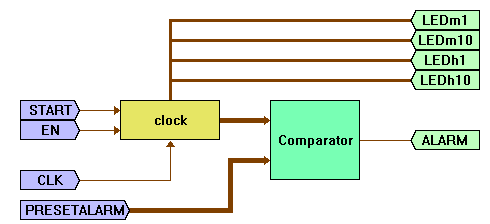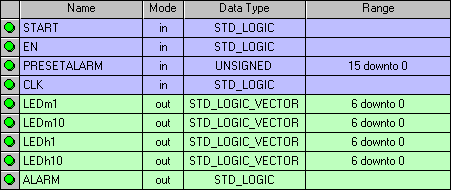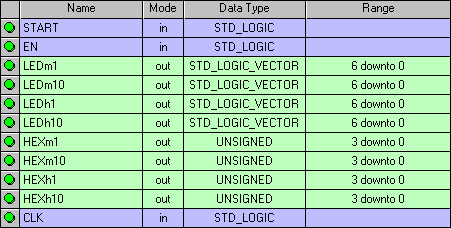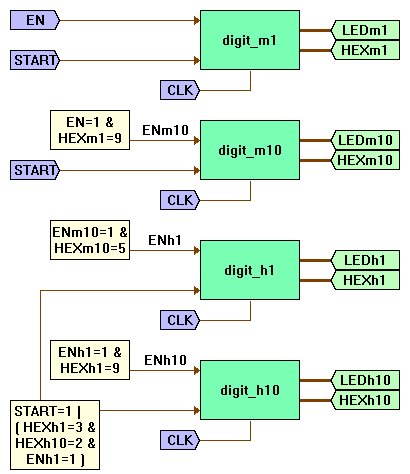architecture clock_arch of clock is
signal ENm10,ENh1,ENh10: STD_LOGIC;
signal HEXm1i, HEXm10i, HEXh1i, HEXh10i: UNSIGNED(3 downto 0);
signal STARTh :STD_LOGIC;
....
....
begin
U_digit_m1: digit_m1
port map (START, EN, HEXm1i, LEDm1, CLK);
HEXm1 <= HEXm1i;
ENm10 <= '1' when EN='1' and HEXm1i=9
else '0';
U_digit_m10: digit_m10
port map (START, ENm10, HEXm10i, LEDm10, CLK);
HEXm10 <= HEXm10i;
STARTh <= '1' when START='1' or (HEXh1i=3 and HEXh10i=2 and ENh1='1') else '0';
ENh1 <= '1' when ENm10='1' and HEXm10i=5
else '0';
U_digit_h1: digit_h1
port map (STARTh, ENh1, HEXh1i, LEDh1, CLK);
HEXh1 <= HEXh1i;
ENh10 <= '1' when ENH1='1' and HEXh1i=9
else '0';
U_digit_h10: digit_h10
port map (STARTh, ENh10, HEXh10i, LEDh10, CLK);
HEXh10 <= HEXh10i;
end clock_arch;
|




